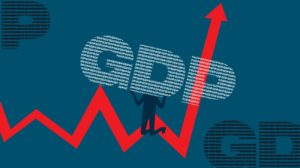
The draft national budget of Ukraine for 2020 provides for the allocation of UAH 245 billion for national security and defense, which makes up 5.4% of the gross domestic product of Ukraine, Minister of Finance Oksana Markarova has said. “In our spending, we focus on national security and defense. In this budget, UAH 245 billion is allocated for national security and defense. This is 5.4% of GDP. Expenses are allocated based on 2019 expenditures,” Markarova said, presenting the draft national budget in the session hall of the Verkhovna Rada.
“Please note that there appeared a separate budget program, in which additional funds are foreseen for the National Security and Defense Council, which will be distributed by second reading,” she added.
The draft national budget for 2020 foresees UAH 245.8 billion for national security and defense, including UAH 207.8 billion in expenses under the budget programs of the Ministry of Defense, UAH 10 billion in state guarantees, UAH 28 billion in additional expenses from the general fund according to the budget program of the National Security and Defense Council (NSDC) “Unallocated expenses on national security and defense,” which will be distributed separately by the decision of the NSDC.
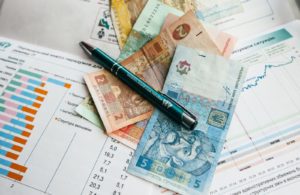
Real GDP in Ukraine in 2019 would grow by 3.2% under the influence of higher internal demand (both consumer and investment) than it had been projected, according to the updated Dragon Capital’s forecast. Earlier Dragon Capital assessed growth of the Ukrainian economy this year at 2.5%.
According to the forecast, the external environment in the first half of the year was better for Ukraine than expected, in particular, because of the sharp favorable change in prices for iron ore and gas.
Despite the fact that in the second half of the year, Dragon Capital expects deterioration in trade, the updated annualized forecasts are still better than they were.
The estimate of the increase in real GDP in 2020 remained the same – 2.8%, since the positive impact of higher demand will be offset by a reduction in the transit of Russian gas, Dragon Capital said in the document. Half a year ago, analysts at Dragon Capital were expecting a 20% drop in transit, but now they predict a 50% fall.
The authors of the report reminded that on January 1, 2020, the 10-year transit contract between Naftogaz Ukrainy and Russia’s Gazprom will expire. The latter is strenuously promoting the Nord Stream 2 and Turkish Stream, the alternative projects to the Ukrainian transit, while the trilateral meetings on the transit issue involving Ukraine, the European Union (EU) and Russia have so far been fruitless.
The analysts said that they revised their forecast on expectations that Ukraine will sign a new extended fund facility with the International Monetary Fund (IMF) in the fourth quarter of 2019 for $6-8 billion after the formation of a new government following the parliamentary elections to be held on July 21.
“Although the current government is successfully coping with growing payments on foreign debt, we still believe that the need for fiscal financing will remain high in the coming year, supporting Ukraine’s need to have a working program with the IMF,” the experts said.
In U.S. dollar terms, the nominal GDP forecast for the current year has been improved from $143 billion to $150 billion, for 2020 – from $148 billion to $161 billion.
Taking into account the unexpectedly strong dynamics of January-May 2019, the analysts at Dragon Capital also significantly improved the forecast for the current account deficit – by 1 percentage point (p.p.), to 2.7% of GDP ($4 billion), explaining this by slower repatriation of dividends and such an improvement in terms of trade, which compensates for the increase in consumer and investment imports.
According to the updated macroeconomic forecast, the current account deficit in 2020 will increase to 3.2% of GDP ($5.1 billion) due to less favorable terms of trade and reduction in gas transit, which, however, is noticeably better than the previous estimate of 3.9%.
As for the hryvnia exchange rate, the investment company experts point to the absence of risks associated with fundamental factors. According to their estimates, the exchange rate will increasingly depend on the mood. In particular, they noted a sharp increase in the inflow of nonresidents (a rise of $1.8 billion) in the first half of 2019. The Dragon Capital analysts said that a further inflow of foreign investors will support the hryvnia in the second half of 2019, reducing the influence of the seasonality factor.
In the updated forecast, the hryvnia rate at the end of 2019 has been improved to UAH 27.50/$1 from UAH 29.70/$ 1 (a rise of 0.7% year-over-year), and at the end of 2020 – UAH 28.50/$1 from UAH 31/$1. The expected weakening next year Dragon Capital explains, first of all, by a decrease in gas transit income and a smaller inflow of foreign investment in hryvnia-pegged government securities.
As for inflation, its forecast for this year is worsened from 7.3% to 7.8% compared with 6.3%, so far expected by the National Bank. However, in 2020, as expected in Dragon Capital, inflation will drop to 6%, which is better than the company’s previous forecast of 6.2%.
The analysts said that the National Bank will resume the easing policy and will lower the key policy rate by 150 basis points this year and 500 basis points in 2020, to a total of up to 11.0% per annum.
Dragon Capital said that the main risk for the forecast is the absence or longer delay of the IMF program, on the other hand, pointing to additional growth potential in the event of a possible acceleration of structural reforms.
According to the analysts of the company, relations with Russia are still an important factor in influencing the macroeconomic situation in Ukraine, as well as the country’s dependence on global commodity prices and the situation in the international loan market.
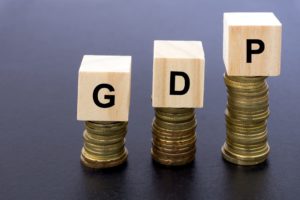
The growth of Ukraine’s gross domestic product (GDP) in January-March 2019 was 2.5% compared to the same period in 2018, the State Statistics Service has reported, while according to its preliminary estimate made in mid-May this figure was 2.2%. According to statistics, GDP growth in the fourth quarter of 2018 was 3.5% and 3.3% in general for 2018.
According to the State Statistics Service, real GDP in January-March of this year (taking into account the seasonal factor) rose by 0.3% compared with the previous quarter.
The service said that nominal GDP for the first quarter of 2019 amounted to UAH 807.8 billion, while the figure per capita stood at UAH 19,179, the change in deflator was 11.7%.
In early May, the National Bank estimated GDP growth in the first quarter of this year at 2.4%, and the Ministry of Economic Development and Trade somewhat later at 2.2%.
At the end of April, the NBU confirmed the forecast for GDP growth for 2019-2021. According to its expectations, this year it will slow down to 2.5%, and in 2020-2021 it will accelerate to 2.9% and 3.7% respectively.
In early April of this year, the Ministry of Finance announced that the Ministry of Economic Development and Trade had worsened the forecast for Ukraine’s GDP growth to 2.8% in 2019, while the national budget for this year was approved on the basis of the forecast of economic growth by 3%.
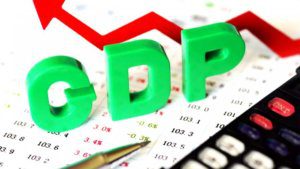
The growth of Ukraine’s gross domestic product (GDP) in April-June 2018 was 3.8% compared to the same period in 2017, whereas according to the preliminary assessment of the State Statistics Service, published in mid-August, this indicator was 3.6%. The department said in relation to the previous quarter, the economy of the country in the second quarter of this year (taking into account the seasonal factor) grow by 1%
According to the service, nominal GDP for the second quarter of 2018 was UAH 807.3 billion, the deflator’s change was 17%. In the second quarter of 2017, these figures were equal to UAH 664.76 billion and 20.9% respectively.
GDP per capita, according to statistics data, in April-June this year rose to UAH 19,074, in real terms by 4.3% compared to April-June last year.
According to the report, the share of final consumer spending increased to 91.5% from 90% a year ago, while that of gross savings decreased to 14.6% from 15.3%, and the deficit of exports and imports of goods and services increased to 6.1% from 5.3%. The National Bank of Ukraine in July estimated GDP growth in the second quarter at 3.2%.
The central bank forecasts acceleration of the country’s economic growth this year to 3.4% from 2.5% in the past year. At the same time, the NBU expects the slowdown in growth in 2019 to 2.5%, followed by acceleration to 2.9% in 2020.
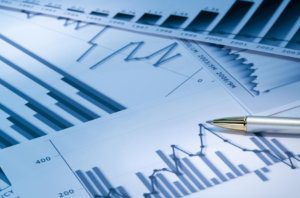
The growth of Ukraine’s gross domestic product (GDP) in the second quarter of 2018 slightly accelerated, to 3.2% from 3.1% in the first quarter, the National Bank of Ukraine said in the July inflation report. “In Q2, 2018, Ukraine’s economy kept growing. The high business expectations of companies were evidence of sustained growth in investment activity. The further increase in personal income fueled consumer demand. Overall, real GDP growth in Q2, 2018 is estimated at 3.2% year-on-year,” reads a report on the central bank’s website.
The steady rise in consumer demand was propelled by stronger household income (wages, pensions, remittances). The latter supported the high growth rates of retail turnover, the NBU said.
“As in Q1, the disruption of ties with the non-controlled territories last year had an impact on the pace of economic growth. As a result, gross value added in the metallurgy, mining industry, and energy sector kept growing despite being held back somewhat by repairs at several large enterprises of the mining industry and metallurgy,” the report says.
As reported, a week earlier the National Bank confirmed the forecast for Ukraine’s GDP growth in 2018 and 2020 at 3.4% and 2.9% respectively, but worsened expectations for 2019 from 2.9% to 2.5%.
In the inflation report, the NBU also confirmed the inflation forecast for the current year at 8.9%, but improved the forecast for underlying inflation to 7.1%.
The growth of Ukraine’s economy in 2017 accelerated to 2.5% from 2.3% a year earlier with the increase in inflation to 13.7% from 12.4%.
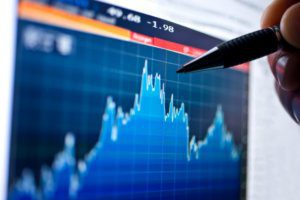
The growth of Ukraine’s gross domestic product (GDP) in 2019 will slow to 3% from 3.2% in 2018, but then it will accelerate to 3.8% in 2020 and 4.1% in 2021, such a base-case scenario is proposed by Ukraine’s Ministry of Economic Development and Trade for approval by the government. The ministry’s draft forecast of the economic and social development of Ukraine for 2019-2021, which is available to Interfax-Ukraine and is put on the agenda of a government meeting on Wednesday, the base-case scenario is also based on a slowdown in inflation from 13.7% in 2017 to 9.9% in 2018, further to 7.4% in 2019, 5.6% in 2020 and 5% in 2021.
The ministry has also developed two other scenarios. According to the more optimistic scenario, the growth of the Ukrainian economy will accelerate 4.1% in 2019, 5% in 2020 and 5.4% in 2021, but inflation will be higher: 8.7%, 7% and 5.2%, respectively.
The low-case scenario implies a slowdown in the country’s GDP growth next year to 1.1%, followed by a slight acceleration to 1.6% and 2.1% in 2020 and 2021, respectively. At the same time, inflation under this scenario is expected to accelerate to 12.4% next year, followed by a slowdown to 8.6% and 6.7% in 2020 and 2021, respectively.